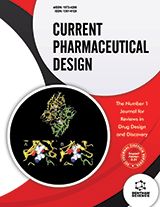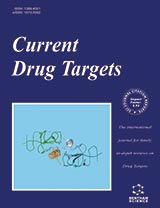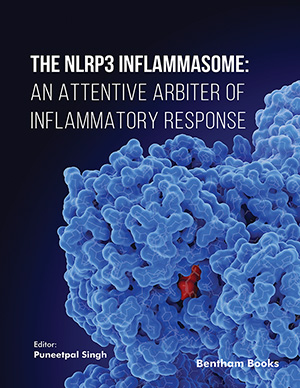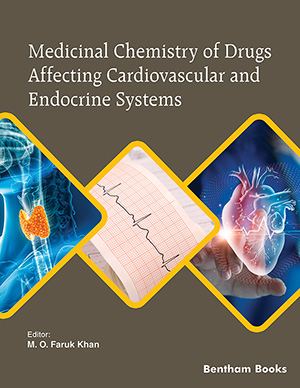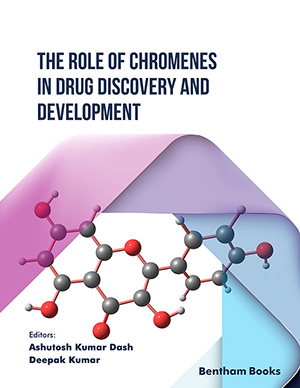Abstract
Mono-aminergic neurotransmitters, in particular serotonin (5-HT), are involved in regulating a large number of psychological and physiological functions, and abnormal 5-HT transmission has been implicated in a wide variety of neuropsychiatric disorders. Positron emission tomography (PET) is a non-invasive nuclear imaging technique with exquisite sensitivity and specificity, allowing delineation of neurotransmitter function in vivo. Over the last two decades, PET has been used to investigate 5-HT function in several neuropsychiatric disorders, in particular mood and anxiety disorders, schizophrenia, Alzheimers disease, and impulse control disorders. In the present review, an overview of recent findings is provided, and possibilities for further research are discussed.
Keywords: Serotonin, positron emission tomography, depression, schizophrenia, Alzheimer, epilepsy
Current Pharmaceutical Design
Title: Investigating Serotonergic Function Using Positron Emission Tomography: Overview and Recent Findings
Volume: 16 Issue: 18
Author(s): D.J. Veltman, H.G. Ruhe and J. Booij
Affiliation:
Keywords: Serotonin, positron emission tomography, depression, schizophrenia, Alzheimer, epilepsy
Abstract: Mono-aminergic neurotransmitters, in particular serotonin (5-HT), are involved in regulating a large number of psychological and physiological functions, and abnormal 5-HT transmission has been implicated in a wide variety of neuropsychiatric disorders. Positron emission tomography (PET) is a non-invasive nuclear imaging technique with exquisite sensitivity and specificity, allowing delineation of neurotransmitter function in vivo. Over the last two decades, PET has been used to investigate 5-HT function in several neuropsychiatric disorders, in particular mood and anxiety disorders, schizophrenia, Alzheimers disease, and impulse control disorders. In the present review, an overview of recent findings is provided, and possibilities for further research are discussed.
Export Options
About this article
Cite this article as:
Veltman D.J., Ruhe H.G. and Booij J., Investigating Serotonergic Function Using Positron Emission Tomography: Overview and Recent Findings, Current Pharmaceutical Design 2010; 16 (18) . https://dx.doi.org/10.2174/138161210791293033
| DOI https://dx.doi.org/10.2174/138161210791293033 |
Print ISSN 1381-6128 |
| Publisher Name Bentham Science Publisher |
Online ISSN 1873-4286 |
Call for Papers in Thematic Issues
"Tuberculosis Prevention, Diagnosis and Drug Discovery"
The Nobel Prize-winning discoveries of Mycobacterium tuberculosis and streptomycin have enabled an appropriate diagnosis and an effective treatment of tuberculosis (TB). Since then, many newer diagnosis methods and drugs have been saving millions of lives. Despite advances in the past, TB is still a leading cause of infectious disease mortality ...read more
Current Pharmaceutical challenges in the treatment and diagnosis of neurological dysfunctions
Neurological dysfunctions (MND, ALS, MS, PD, AD, HD, ALS, Autism, OCD etc..) present significant challenges in both diagnosis and treatment, often necessitating innovative approaches and therapeutic interventions. This thematic issue aims to explore the current pharmaceutical landscape surrounding neurological disorders, shedding light on the challenges faced by researchers, clinicians, and ...read more
Emerging and re-emerging diseases
Faced with a possible endemic situation of COVID-19, the world has experienced two important phenomena, the emergence of new infectious diseases and/or the resurgence of previously eradicated infectious diseases. Furthermore, the geographic distribution of such diseases has also undergone changes. This context, in turn, may have a strong relationship with ...read more
Melanoma and Non-Melanoma Skin Cancer Treatment: Standard of Care and Recent Advances
In this thematic issue, we aim to provide a standard of care of the diagnosis and treatment of melanoma and non-melanoma skin cancer. The editor will invite authors from different countries who will write review articles of melanoma and non-melanoma skin cancers. The Diagnosis, Staging, Surgical Treatment, Non-Surgical Treatment all ...read more
 11
11
- Author Guidelines
- Graphical Abstracts
- Fabricating and Stating False Information
- Research Misconduct
- Post Publication Discussions and Corrections
- Publishing Ethics and Rectitude
- Increase Visibility of Your Article
- Archiving Policies
- Peer Review Workflow
- Order Your Article Before Print
- Promote Your Article
- Manuscript Transfer Facility
- Editorial Policies
- Allegations from Whistleblowers
- Announcements
Related Articles
-
Moxifloxacin Hydrochloride-Loaded Eudragit® RL 100 and Kollidon® SR Based Nanoparticles: Formulation, In vitro Characterization and Cytotoxicity
Combinatorial Chemistry & High Throughput Screening Potential Drugs Targeting Microglia: Current Knowledge and Future Prospects
CNS & Neurological Disorders - Drug Targets Drug Repositioning: Antimalarial Activities of GABA Analogs in Mice Infected with <i>Plasmodium berghei</i>
Central Nervous System Agents in Medicinal Chemistry Editorial (Thematic Issue: The Activity of Products From Cnidaria: A Therapeutic Tool in Neurological Diseases? Part II)
Central Nervous System Agents in Medicinal Chemistry Rat Resources in Biomedical Research
Current Pharmaceutical Biotechnology Targeting PPAR Isoforms Following CNS Injury
Current Drug Targets AMPA Receptor Antagonists for the Treatment of Stroke
Current Drug Targets - CNS & Neurological Disorders Editorial
Drug Delivery Letters Postpartum Psychiatric Disorders: What Do We Know And Where Do We Go?
Current Psychiatry Reviews Cerebral Palsy: Classification, Etiology and Evolution of Spine Deformity in Children and Adolescents
Current Pediatric Reviews Glutamatergic Neurotransmission As Molecular Target of New Anticonvulsants
Current Topics in Medicinal Chemistry Plant Derived Inhibitor Sulforaphane in Combinatorial Therapy Against Therapeutically Challenging Pancreatic Cancer
Anti-Cancer Agents in Medicinal Chemistry Extrasynaptic GABA<sub>A</sub> Receptors in the Brainstem and Spinal Cord: Structure and Function
Current Pharmaceutical Design Therapeutic Management of COVID-19 Patients: Clinical Manifestation and Limitations
Current Pharmaceutical Design Genetic and Environmental Factors in Complex Neurodevelopmental Disorders
Current Genomics Therapeutic Monitoring of Carbamazepine in Epilepsy Patients by Highly Sensitive LC/MS Method and its Clinical Applications
Current Analytical Chemistry Effect of Neuroinflammation on ABC Transporters: Possible Contribution to Refractory Epilepsy
CNS & Neurological Disorders - Drug Targets Metabotropic Glutamate Receptor 7: From Synaptic Function to Therapeutic Implications
Current Neuropharmacology Oxidative Stress and Antioxidant Potential of One Hundred Medicinal Plants
Current Topics in Medicinal Chemistry The FDG-PET Revolution of Medical Imaging – Four Decades and Beyond
Current Molecular Imaging (Discontinued)


